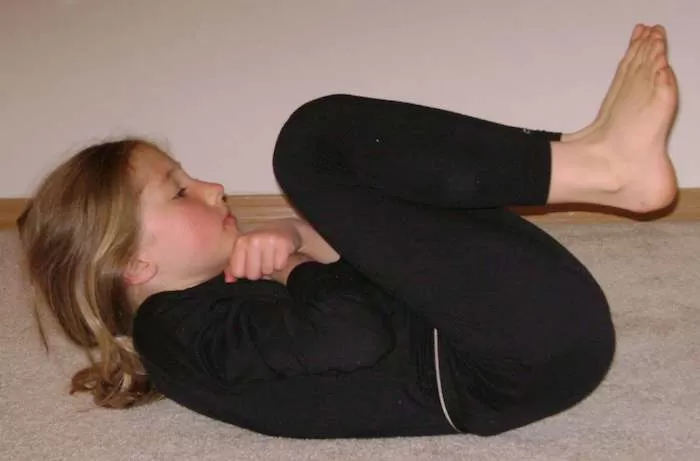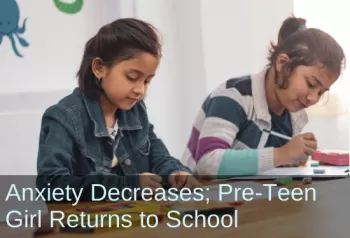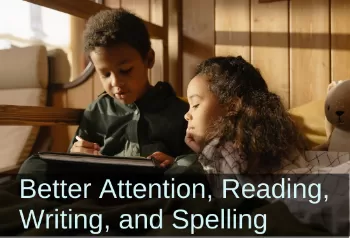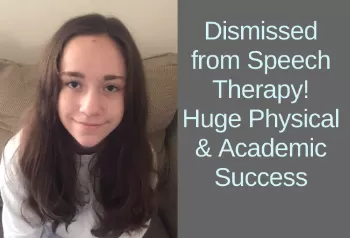Learning Challenges
How Rhythmic Movements and Reflex Integration Boost Learning
by Sonia Story, M.S.
As parents and professionals, we continually seek ways to help children succeed in learning. Nearly all of us have been conditioned to assume that if a child is struggling to read, the remedy is to give more practice in reading. The hope is that reading skills will become automatic. But for many children, extra practice doesn’t work and can be a source of greater stress.
What Gets in the Way of Learning?
Children who are bright and want to learn, may still struggle even after much practice to improve their cognitive skills. Why? It is not from a lack of intelligence. Many children in modern society are not receiving their full measure of neurodevelopmental movements in their first year or two of life. When this happens, children are left with an incomplete foundation for learning.
When learning is stressful and difficult, it is often linked to challenges with retained primitive reflexes that have remained unintegrated since infancy. Research shows a link between retained primitive reflexes, learning challenges, and ADHD. Primitive reflexes are a category within neurodevelopmental movements and retained primitive reflexes are movement patterns that have not fully matured. This suggests that children who struggle with learning can benefit greatly from a neurodevelopmental movement program to mature the primitive reflexes and build the foundations for learning. Children can be much more successful in focusing and learning.
 Helping Our Children Learn with Neurodevelopmental Movement
Helping Our Children Learn with Neurodevelopmental Movement
The brain recognizes and responds to neurodevelopmental movements—primitive and postural reflexes and rhythmic movements. These are the same innate movements we are designed with in infancy to develop the brain, body, and sensory systems and to build our foundations for learning.
We can use neurodevelopmental movements at any age to mature and connect brain and sensory systems, thereby taking the stress out of learning. At the same time, we often see these movements helping children with their physical skills, social-emotional skills, communication, and self-confidence.
Even 5 minutes a day of these powerful innate movements can make a big difference
In a recent study, children between the ages of 6 and 8 completed four rhythmic movements for five minutes a day, three to five times per week. The outcomes were striking. After 10 months, testing showed a decrease in retained primitive reflexes, and significantly higher reading scores when the movements were practiced four or more times per week (Grigg et al., 2023).
There is no substitute for a calm and effective brain and sensory system. Doing neurodevelopmental movements is likely the most natural and effective way to establish the foundations for learning and emotional maturity. With a commitment to do enjoyable movements consistently with our children, we can give them a gift that will last a lifetime. Here are some outstanding real-life examples:
Allison struggled with school and could not navigate changing classes, preparing for the next class, or how eat lunch in the cafeteria. Over 12 sessions, Allison's OT used rhythmic movements and primitive reflex integration and, during that time, standardized testing at the school demonstrated her reading and language comprehension went from the 5% to the 90%, her math skills increased by several grades, and she even graduated from speech therapy. See her full story.
This mom was volunteering in her daughter's class and noticed how tired and "spaced out" she seemed. Her concerns brought her to the Brain and Sensory Foundations course, where she gained tools to help with her daughter's focus. The result? Improved reading, spelling, and math skills. In addition, her daughter is feeling less shy—interacting with new people and trying new activities more readily. Check out their story.
Rhythmic movements and primitive reflex integration helped this 6-year-old boy improve many aspects of learning. Key to his dramatic progress was the use of rhythmic movements at home. This case study shows just how profound the effects of neurodevelopmental movements can be!
This 12-year-old girl had ongoing struggles with her expressive and receptive language, math skills, and social confidence. Using tools from the Brain and Sensory Foundations First Level course, her mom was able to help her improve her math scores, writing skills, and speech—to such an extent, she no longer needs speech therapy. Go here to see how they did it.
Reference
Grigg, T. M., Culpan, I., & Turnbull, W. F. (2023). Primitive reflex integration and reading achievement in the classroom. Journal of Neurology and Experimental Neuroscience, 9(1), 18-26.
Sonia Story, M.S. has been teaching neurodevelopmental movements since 2006.
Sonia developed the Brain and Sensory Foundations program to provide comprehensive training in neurodevelopmental movements—combining innate rhythmic movements, play, primitive reflexes, and postural reflexes.
She earned a Bachelor's degree in biology/psychology and a Master’s degree in Movement Sciences. She is the author of The Importance of Reflex Integration and the Evidence eBook, giving the rationale and evidence basis for using neurodevelopmental movements for helping with challenges such as ADHD, Sensory Processing Disorders, anxiety, emotional dysregulation, visual skill deficits, poor social skills, gross and fine motor delays and other neurodevelopmental and behavioral disorders.
Her work is featured in numerous podcasts, summits, and conferences, and in the books Almost Autism: Recovering Children from Sensory Processing Disorder; Special Ed Mom Survival Guide; Family Health Revolution; and Same Journey, Different Paths—Stories of Auditory Processing Disorder.
Sonia’s mission is to help children and families experience the profound benefits of neurodevelopmental and integrative movements for more functional and fulfilling lives.






